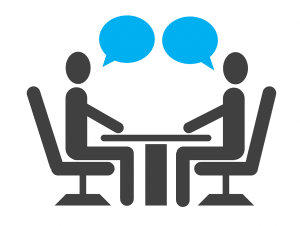It’s October, and school is back in full swing, with all the trials and tribulations it brings to kids and parents alike. And with that in mind, October is National Bullying Prevention Month, a time to reflect on how we can all take steps to do something about the worst-case scenario of those trials and tribulations.
Bullying is such a common and damaging problem – and it has only evolved as technology has also evolved – but it often gets brushed aside or not spoken about or dealt with. And that’s often because we, as adults, sometimes just don’t know what to say or do. But this month, we want to really talk about what’s going on with kids, and what parents can do to help.
The Same Old Problem
Bullying among children is certainly not a new problem. Just because older generations didn’t have to go through the tortures of being bullied both at school and online, doesn’t mean that they didn’t have their fair share of bad experiences with that one kid (or group of kids) who just wouldn’t leave them alone. But what does the problem look like today? Check out these eye-opening statistics:
- One out of every five (20.2%) students report being bullied.
- 41% of students who reported being bullied at school said that they think the bullying would happen again.
- Rates of bullying vary across studies (from 9% to 98%). A meta-analysis of 80 studies analyzing bullying involvement rates (for both bullying others and being bullied) for 12-18 year old students reported a mean prevalence rate of 35% for traditional bullying involvement and 15% for cyberbullying involvement.
- One in five (20.9%) tweens (9 to 12 years old) has been cyberbullied, cyberbullied others, or seen cyberbullying.
- 49.8% of tweens (9 to 12 years old) say they have experienced bullying at school and 14.5% of tweens shared they have experienced bullying online.
- Students who experience bullying are at increased risk for depression, anxiety, sleep difficulties, lower academic achievement, and dropping out of school.
- Bullied students say that bullying has a negative effect on how they feel about themselves (27%), their relationships with friends and family (19%), their school work (19%), and physical health (14%).
- Tweens who were cyberbullied shared that it negatively impacted their feelings about themselves (69.1%), their friendships (31.9%), their physical health (13.1%), and their schoolwork (6.5%).
- 70.1% of LGBTQ students were verbally bullied (e.g., called names, threatened) in the past year because of their sexual orientation and 59.1% because of their gender expression; those numbers are 28.9% and 24.4% respectively for physical bullying.
- 23% of African-American students, 23% of Caucasian students, 16% of Hispanic students, and 7% of Asian students report being bullied at school
- A meta-analysis found that students facing peer victimization are 2.2 times more likely to have suicide ideation and 2.6 times more likely to attempt suicide than students not facing victimization
When we read things like the above, we should all sit up and take notice. There are a lot of kids out there who are suffering, and many of them don’t really even know how to talk about what’s happening to them, much less what they should do to try to combat the problem. So what can parents do? The first step is recognizing that there is a problem.
Recognizing the Signs of Bullying
As we pointed out above, kids often won’t talk about being bullied, and will end up suffering in silence. They might think they’ll be blamed, or be worried about retaliation – but whatever the reason for their silence, they still need you to be there to support them, so it’s important you recognize the signs that something is wrong in their life. Some of the signs that a child is being bullied include:
- Complaining of physical issues like stomach aches, headaches, or diarrhea, which can be caused by anxiety and stress
- No longer mentioning friends they used to spend time with
- Not wanting to go to school
- Changing moods – they might seem anxious, sullen, clingy, or withdrawn, for example
- Seeming to suffer from low self-esteem, or blaming themselves for things and saying they are not good enough
- Changing sleep patterns
- Dropping grades
- Losing interest in activities they once enjoyed
- Coming home with a lot of lost, damaged, or misplaced items
- Getting upset when going online
If you notice these signs, or if your child does confide in you, don’t minimize, rationalize, or explain away the experience – be there to listen and support your child. But it can be hard to know how to do that, so let’s take a look at some suggestions for how to handle the situation.
What Can You Do If Your Child Is Being Bullied?
Before we talk about some steps for dealing with a bullying situation with your child, let’s go over what exactly bullying is. Bullying is:
- Deliberate – Bullies intend to hurt others.
- Repeated – It’s more than just one mean comment, or cutting someone in the lunch line. Bullying is a repetitive behavior – or it at least has the potential to be repeated over and over.
- Includes a power imbalance – Bullies choose victims who they see as vulnerable.
So if it seems like your child is being bullied, try the following steps:
1. Listen to them

The first thing you need to do is just hear them out. It might be painful for you to hear what they’re going through, but it’s important that you are open and able to hear what they have to say. Try to stay neutral but supportive as you listen, and stick to simple reactions like, “What can I do to help?” as opposed to anger or being upset. Remember, as well, not to minimize the situation, either.
And if your child is not opening up to you, but you’ve noticed the signs of bullying in them, try asking open-ended questions like “How was your bus ride today?” or, “Have you ever seen anyone being mean to someone on the bus?” Then move to questions that directly affect your child, such as, “Are you ever scared to get on the bus?” or, “Has anyone ever been mean to you on the bus?”
2. Make a few things clear right from the start
Once you’ve heard them out, stress that bullying is never their fault, and it’s always more about the bully themselves than about your child. It’s also not up to them to prevent bullying. Once you’ve made that clear, you can talk about how you together can have a plan in place to address the problem and hopefully keep it from escalating. In addition, you can teach them to name what’s happening to them as “bullying,” which can help them feel empowered, since “bullying” is a negative word in most schools now, so they will know that their bully is the one in the wrong.
3. Talk about ways they can respond
Being bullied is really stressful, and it can be hard for anyone of any age to think straight in the moment. It can be helpful to offer some direct, but non-antagonistic phrases they can practice and use to tell someone to stop bullying behaviors. These can include really simple things like “Back off,” or “Leave me alone.” Your child might feel like they need clever retorts, but sometimes less is more.
4. Try some role-playing
You can try to help your child build confidence in their reactions to bullies by role-playing bullying scenarios with them. Talk about their options: giving the simple phrases from above in a firm, confident voice, or not reacting at all if the bully is one who is looking for kids who will get upset and take the teasing to heart. Either reaction will at the very least give them time to remove themselves from the situation and find someone to talk to, especially if they feel unsafe. It’s important to note that you should work with your child’s strengths when suggesting reactions to situations. This will help them build confidence.
5. Take the lead in asserting that bullying is not acceptable at your child’s school
Schools need to take responsibility for their environment and culture, and you can contact your child’s school about the bullying that is going on, and suggest that they implement anti-bullying and anti-violence programs – you can even take the lead in spearheading these programs. It might feel frustrating that you need to do this, but it can be worth it in the end.
According to Joel Haber, a psychologist and author who is an expert on bullying prevention, “Schools that create a culture of inclusion, train staff about bullying and follow clear protocols rewarding efforts to create a community for all faculty and students have better outcomes against bullying and greater safety. Schools that ignore bullying in their student body and faculty and don’t take steps to protect the community allow those who bully a place to use their power to marginalize others. They create a culture where those toward the bottom of the social ladder are victimized.”
6. Build their confidence

The better your child feels about themselves, the less likely it will be that bullying will affect them in a serious way. Encourage them to do things that they enjoy, things that bring out the best in them, and things that make them feel like they’re building skills. And don’t forget to praise them and honor their strengths, which will also help improve their self-esteem. Remember that, according to Steven Pastyrnak, Ph.D., the Division Chief of Psychology at Helen DeVos Children’s Hospital in Grand Rapids, MI, “As parents, we have a tendency to focus on negative situations, but kids actually listen better when their good behaviors are reinforced.”
But it’s not all about your praise. Tell them to remind themselves of all the positive things about them when someone says something negative about them.
7. Report Repeated, Severe Bullying
Your child might be afraid of retaliation, but in the end, it’s up to adults to keep kids safe. You might need to go with your child to speak to a teacher, counselor, principal, or school administration to deal with the situation. Know your school’s policy on bullying, and be ready to follow up.
Finally, we’d like to note that another important thing you can do is to teach your child to be an “upstander” whether they are the victim of bullying or not. This means that you can encourage them to not be a passive bystander in bullying situations. We’re not talking about aggressive behavior; rather, talk about how taking positive action can make a difference. Ask them how it feels to have someone stand up for them, and encourage them to do for others what would feel good for them. As Walter Roberts, a professor of counselor education at Minnesota State University, Mankato and author of Working With Parents of Bullies and Victims points out, “When it’s the kids who speak up, it’s 10 times more powerful than anything that we’ll ever be able to do as an adult.”
Bullying should never be considered acceptable behavior, no matter how it’s done or what age the children involved are. We can’t sit back and assume that it’s all just normal childhood stuff that will work itself out. But it’s also absolutely normal to be unsure what to do if the situation presents itself to you. Just know that there are steps you can try – the most important thing to do is listen, support, and build up your child as best you can. Now let’s all get out there this National Bullying Prevention Month and be upstanders – and teach our children to do the same!
Co-written by Joanna Bowling





